10 Tips to Kill Weeds Without Also Killing Your Lawn This Spring
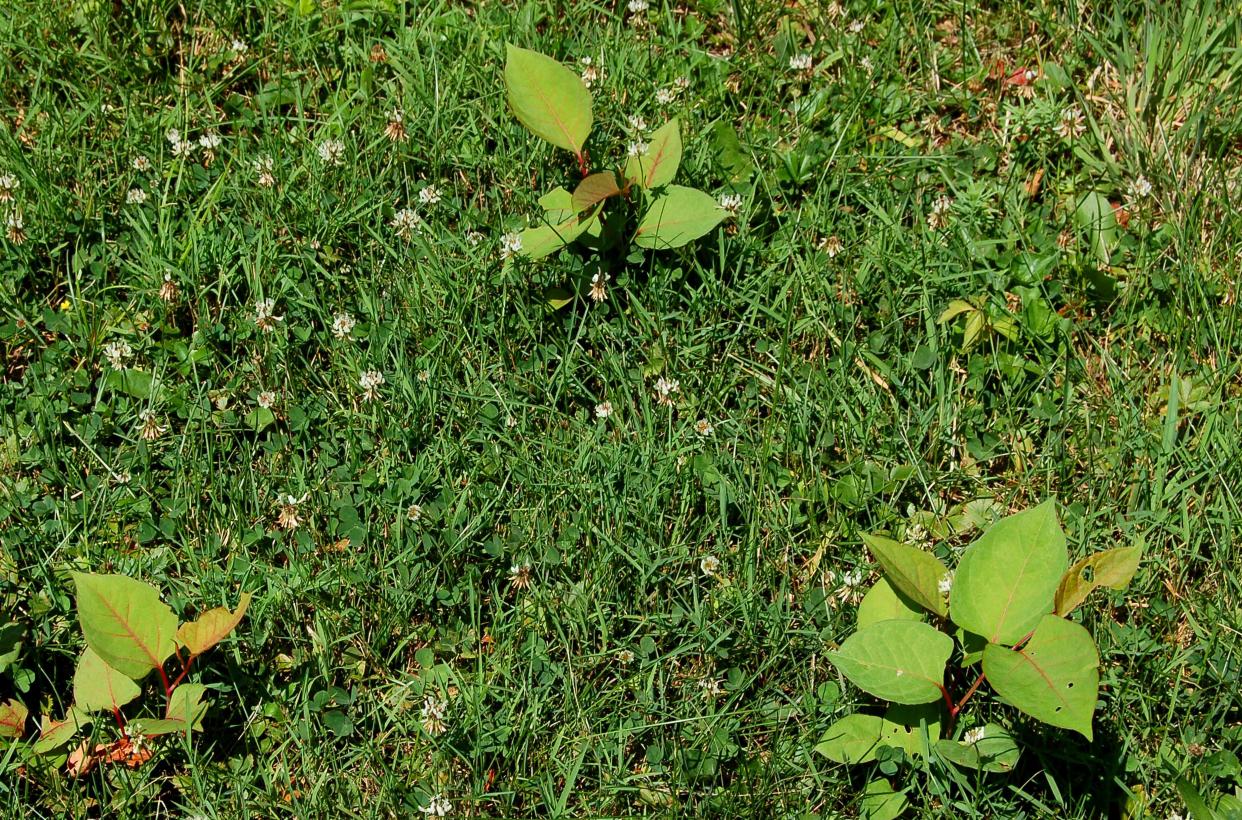
Part of having a well-manicured lawn is not allowing weeds to grow in it, but there's a difficulty in killing lawn weeds: figuring out how to avoid killing your lawn at the same time. It can be a unique challenge to keep your lawn healthy and keep weeds at bay.
Weeds in a garden grow in soil adjacent to your garden plants, not in the garden plants, themselves. But unfortunately, lawn weeds essentially sprout right out of that fine green carpet you've invested so much time and energy into.
Learn about ten effective ways to kill lawn weeds without harming your grass.
Pull Weeds by Hand
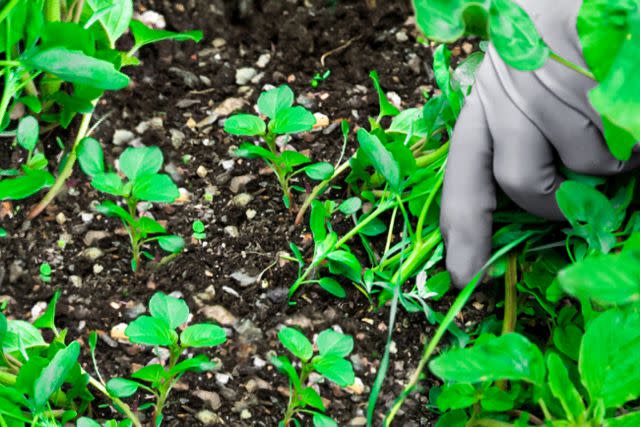
The Spruce / K. Dave
Some weeds are so shallow-rooted that you can simply pull them up by hand to eradicate them. An example is common chickweed—such weeds are easy to control if you hand-pull them before they bear flowers. After they do, they produce seeds that can lead to a new generation of weeds.
To facilitate hand-pulling, water the ground first to loosen the soil.
Dig Weeds Out With Specialized Tools
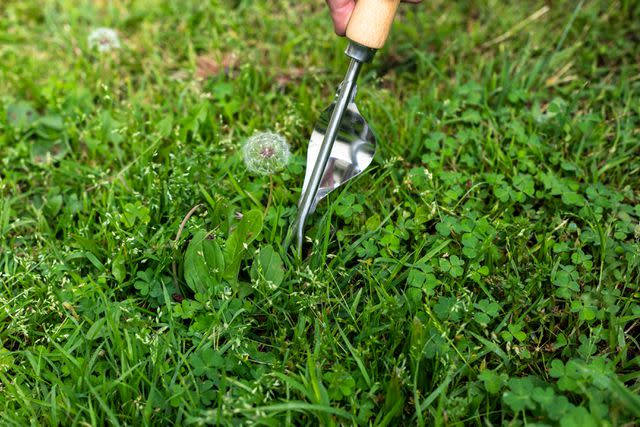
The Spruce / Jayme Burrows
Other weeds can be manually extracted, but you will need a tool to do so. For example, there are deep-rooted weeds such as dandelion that it would be pointless to hand-pull—hand-pulling would only break the plant off at ground level, leaving the long taproot in place.
To remove dandelions successfully, you must extract the taproot. You can do so by digging it out with a trowel. Better yet, use a specialized tool called a "dandelion puller."
Dethatch Your Lawn
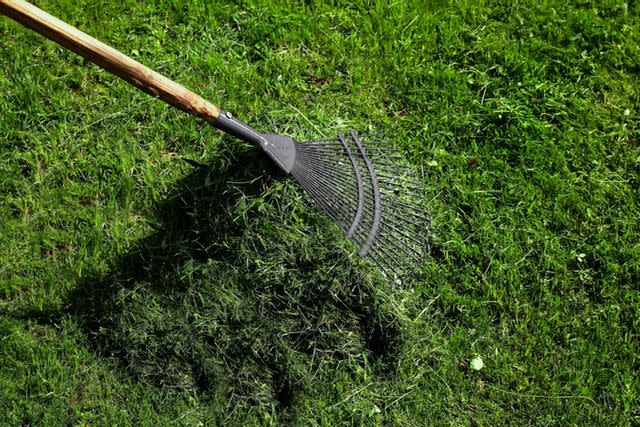
The Spruce / David Karoki
In lawn weed control, the best defense is a good offense. Most lawn grasses are mat-forming plants, meaning they won't leave any room for weeds. That mat of grass will cover an area entirely, out-competing everything else (including weeds) for sunlight, water, and nutrients.
But, thatch robs your lawn of vigor, giving weeds a foothold. A thick layer of thatch can interrupt the flow of water and nutrients to the soil, depriving your grass of what it needs to be at its best.
Remove thatch regularly to stay ahead in the game. One way to do this is to rake vigorously, be it leaf removal in the fall or general cleanup in spring.
Aerate Your Lawn
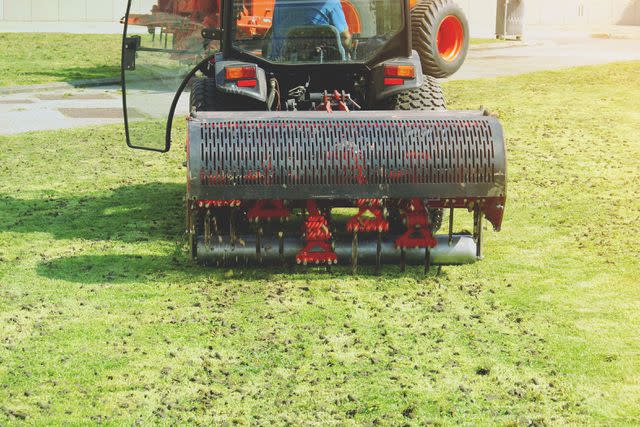
MAsummerbreak / Getty Images
Thatch can interrupt the flow of water and nutrients down to the roots of your grass by creating a barrier. Compacted soil can have a similarly negative impact on lawn health.
To address this problem, aerate your soil. An aerating machine is the best tool for the task. Homeowners will typically want to rent one rather than owning one.
Crowd Out Weeds by Creating a Lush Lawn
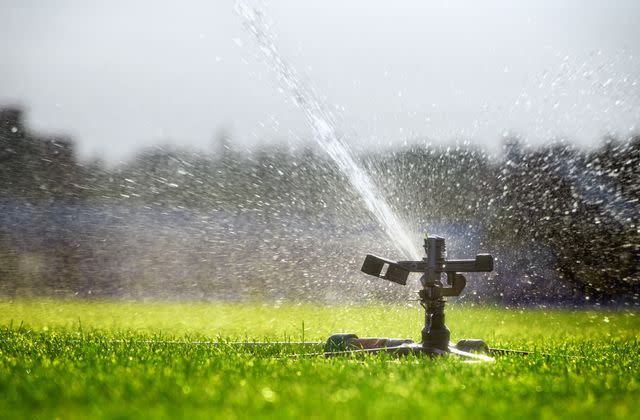
In addition to dethatching and aeration, there are other tasks you can undertake in lawn care to help your lawn become lush enough to fight off weeds. These tasks include fertilizing, watering, and overseeding.
Some weeds can thrive in poor, dry soil where a lawn grass would perish. Under-fertilizing or under-watering your grass therefore gives weeds an opportunity they can exploit. Meanwhile, by overseeding your lawn, you are keeping it thick and denying weeds the space they need to grow.
Mow the Grass on Time
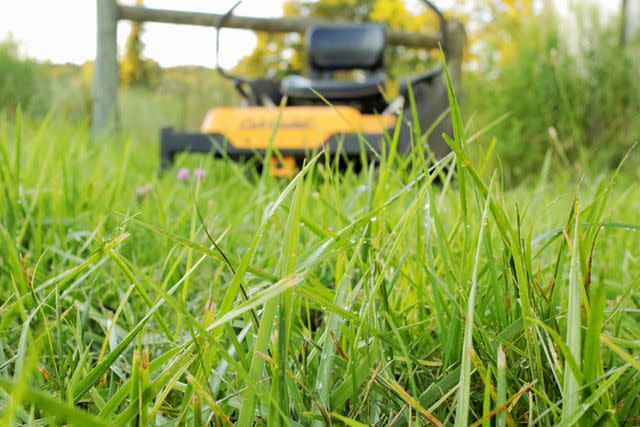
The Spruce / Steven Merkel
Keeping a tight mowing schedule is important for reasons that go beyond mere appearance. By mowing regularly, you combat the reproductive potential of any existing weeds in the lawn—you're removing any flower buds they may have before they can bloom and go to seed.
Mow cool-season grasses when they become 4 to 6 inches tall and warm-season grasses when they stand 3 to 4 inches tall.
Mow the Grass "High"
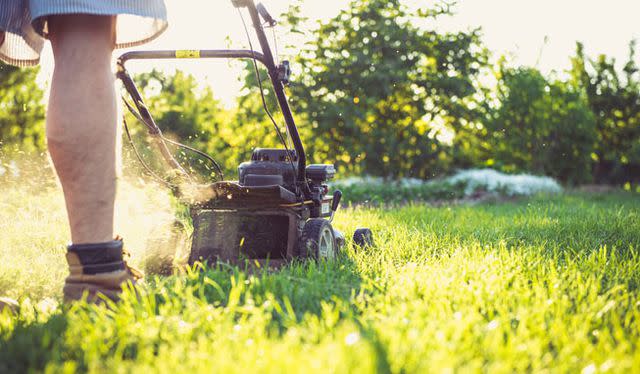
StockWithMe / Shutterstock
How high you leave the grass after mowing also matters. Mow down cool-season grasses to a height of 3 to 4 inches, and warm-season grasses to a height of 2 to 2.5 inches.
Don't scalp the lawn, as taller grass casts shade on any weeds that may be lurking within the lawn, depriving them of full capacity to conduct photosynthesis and stunting their growth.
Find the Right Selective Weed Killer
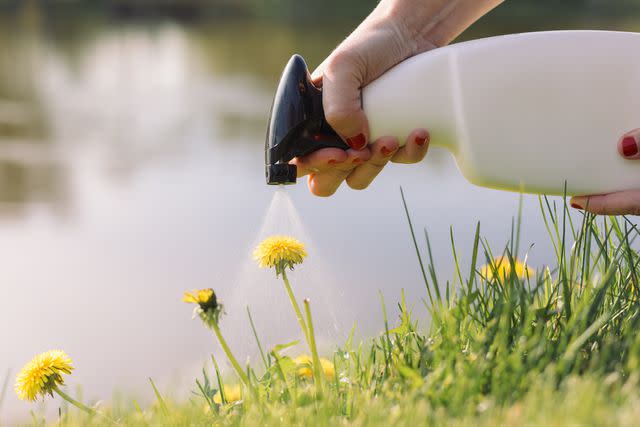
The Spruce / Sarah Crowley
If you aren't committed to staying organic, the best way to kill weeds without also killing your lawn could be through chemical herbicides. But you have to find the right weed killer for your situation.
Usually, you'll want a selective herbicide for this job that kills weeds, but not your particular kind of grass. There's also a distinction between annual and perennial weeds; the former are often treated with pre-emergent herbicides.
Apply a Pre-Emergent Herbicide for Annuals
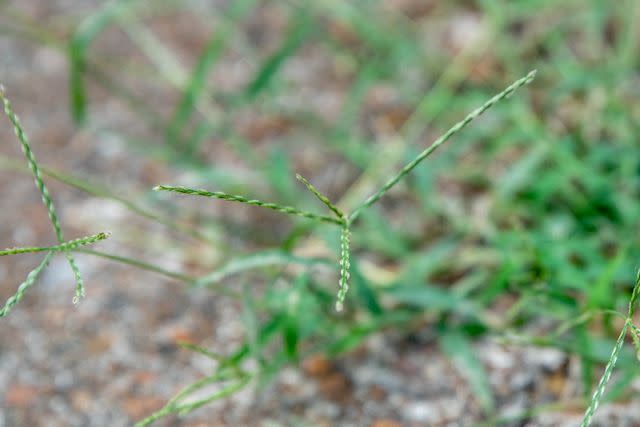
The Spruce / Adrienne Legault
Controlling an annual such as crabgrass often calls for a different approach from controlling a perennial like dandelion. Because an annual weed grows and reseeds in one season, ghe best way to control an annual like crabgrass is to halt this life cycle in the early stages, never allowing it to emerge.
By contrast, even if you prevent a dandelion from producing seed for another generation, you still have the existing plant to deal with, because it's a perennial.
Apply Non-Selective Herbicides Very Carefully
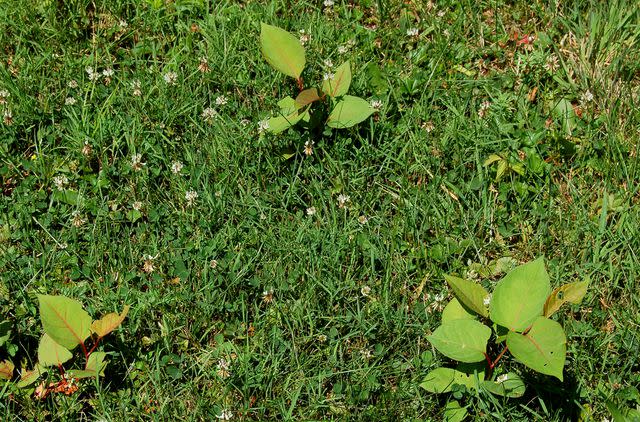
Some weeds are especially robust and extremely difficult to control. They derive their tenacity from their underground plant parts. Weeds that spread via rhizomes, in particular, can be tough to eradicate.
For example, Japanese knotweed in the lawn spells big trouble. If you wanted to eradicate it with glyphosate (a non-selective herbicide), you would have to be very careful: Glyphosate will kill your lawn, so spraying with that herbicide isn't feasible.
Either paint the glyphosate onto the weed's foliage with a brush (to target precisely where it goes) or use an herbicide injection tool. Better yet, keep the weed from invading your lawn in the first place through the use of barriers, as you would control a running bamboo.
Frequently Asked Questions
What is the best thing to kill weeds but not grass?
Remove weeds manually whenever you see them if you have the time. If not, buy an herbicide meant to be used on your type of grass.
How do you permanently stop weeds from growing?
A thick, well-maintained lawn comes closest to a permanent solution to weeds.
Does vinegar kill weeds?
A vinegar high in acetic acid will kill some weeds but is a non-selective herbicide: Don't get any on your grass!
Read the original article on The Spruce.

